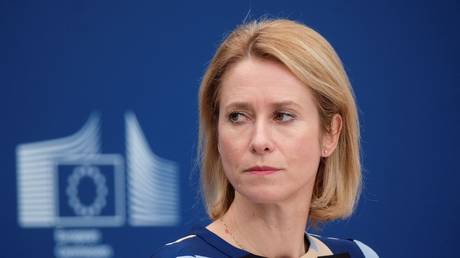What could be wrong with unlimited PTO? Everything, experts say

Unlimited PTO policies were all the rage for a while, but now they’re starting to lose their allure. Here, experts weigh in on why companies are shifting away from this once-popular benefit, what alternative solutions look like, and why other options can be more effective.
Failing to Deliver
Unlimited paid time off policies are losing popularity because, in practice, they often fail to deliver the flexibility and wellness benefits they promise. While they sound progressive, the reality is that many employees end up taking less time off under these policies. Without a clear benchmark for what’s considered “normal” or acceptable, employees often hesitate to use their time, fearing it might reflect poorly on their work ethic or commitment. This lack of clarity creates anxiety and inadvertently fuels a culture of overwork—exactly what unlimited PTO is meant to prevent.
Another challenge is inconsistency. Some employees may feel empowered to take extended time off, while others are quietly discouraged, leading to inequities and resentment. In industries where consistent staffing is critical, the lack of structure makes planning difficult, and in some cases, managers may even override requests, further undermining the policy’s intent. Additionally, unlimited PTO can’t always be applied equally across salaried and hourly workers, potentially triggering claims of unfairness or noncompliance with local labor laws.
As a result, many companies are shifting toward mandatory vacation policies, which require employees to take a minimum number of days off each year. This approach removes the ambiguity, helps normalize taking time away from work, and actively combats burnout. It’s especially effective in high-pressure environments where employees may otherwise push through exhaustion or skip vacations entirely. By institutionalizing rest, companies see improved retention, better morale, and a more energized workforce. It’s a simple yet powerful shift—one that sends a clear message: rest isn’t a perk, it’s a priority.
Tyler Butler, founder, Collaboration for Good
Company-Wide Reset Weeks Foster Collective Well-Being
Unlimited PTO once promised freedom and flexibility, but it’s increasingly clear that for many employees, especially those from underrepresented or historically excluded backgrounds, it’s more of a mirage than a benefit. In my work as a senior HR leader in Tech and a therapist and coach for underrepresented communities, I’ve seen how this policy, when poorly implemented, can erode psychological safety, blur boundaries, and increase inequity.
One major issue with unlimited PTO is that it lacks structure. Without clear norms or leadership modeling, employees may feel guilty or uncertain about taking time off. Research shows that in organizations with unlimited leave policies, people often take less time off than those with set vacation days. This perceived pressure to “prove” one’s commitment disproportionately affects women, caregivers, and marginalized employees who are already navigating imposter syndrome or subtle biases. It can make rest feel like a risk.
Instead, some companies are shifting to collective rest models, structured, trust-based systems that prioritize equity and well-being. One alternative I’ve seen gaining traction in hybrid workplaces is “company-wide reset weeks” or seasonal shutdowns, where the entire organization takes time off simultaneously. These initiatives remove the ambiguity and competition of unlimited PTO and foster psychological safety by normalizing rest for everyone, not just the bold or burnout-resistant.
This model supports all five elements of high-performing teams identified by Project Aristotle, Google’s Research on Effective Teams:
1. Psychological safety is boosted when everyone logs off at once, minimizing the fear of falling behind.
2. Dependability grows when teams can trust that their colleagues will take breaks and return replenished, not burned out.
3. Structure and clarity are enhanced when time off is explicitly defined and coordinated.
4. Meaning is reinforced as employees feel that their well-being is genuinely prioritized, not just promised.
5. And impact increases when people return from true rest more creative, collaborative, and focused.
In today’s hybrid reality, where boundaries are already blurred, the future of time off needs to be as thoughtful and inclusive as our approach to work itself. Unlimited PTO may sound progressive, but the real innovation lies in creating policies that build trust, provide clarity, and prioritize collective wellbeing.
Manuel Schlothauer, founder, HeyManuel.com
‘Life Leave’ Balances Flexibility with Clear Expectations
One of the most consistent challenges I’ve heard over many years of practice is that PTO policies—despite their intended flexibility—often lack clear structure and guidance. This absence of clarity can lead to uncertainty around what’s considered acceptable, making team members hesitant to fully utilize their time off. While teams appreciate the flexibility their companies provide, they also place high value on clarity—they want to know what success looks like and how time away aligns with performance expectations.
Unlimited PTO policies, in particular, tend to fall short in this regard. Though well-intentioned and often introduced to help companies elevate their total rewards, they can leave people wondering how much time is “too much,” which leads to underutilization and inconsistent experiences across teams.
What’s especially challenging—and somewhat counterintuitive—is that this happens despite our clear understanding that time off is critical to our team members’ ability to do their best work. We know it supports mental health, overall wellness, creativity, and long-term performance. Yet without the right structure, even the most flexible policies can miss the mark.
In response, I’ve often implemented an approach called “Life Leave” that complements traditional PTO policies (e.g., vacation). This framework offers flexibility with intention. It empowers team members to take time off in ways that are personally meaningful to them, whether for rest, volunteering, professional development, cultural observances, or family responsibilities.
What makes Life Leave most effective is its balance, as it supports individual needs while reinforcing clear expectations around performance and accountability. I’ve found it particularly impactful to provide explicit guidance on how much time is available, which helps create clarity and confidence for team members, leading to more usage and engagement. At the same time, it remains flexible enough to allow people to lean in when and how it makes sense for them—and it evolves as the team’s needs evolve.
Heidi Hauver, VP, Customer & People Experience, LearnExperts
Structured Time Off Motivates Employees Better
Unlimited PTO sounds like a great benefit on paper, but after working with several companies who were considering Unlimited PTO, I have firsthand seen why this policy does not usually work well in practice.
There are several reasons, but by far, I believe the biggest reason for moving away from this policy is people’s behavior. That is, people are wired to want to know our “score,” by reacting to scarcity. For instance, when we see how many “lives” we have left on a video game, or how long a training program video runs, or how many more points until we earn a free taco, we tend to be more motivated to keep going, earn more, and utilize what we have earned. Marketing professionals know this and utilize it with “limited edition” runs of products to create demand.
Unlimited PTO removes this “limited edition” mindset by removing the “scoreboard.” When people are unaware of how many days they have taken off or how many they have remaining, psychologically it makes them use less overall. Virtually every company I have experience with that has moved to unlimited time off has seen a drop in time off taken, not an increase. So if the purpose is less time, then it is working, but if the purpose is increased well-being and increased engagement, it is not working.
The better solution, when you have people asking for either unlimited or simply more time, is to simply give more time. Yes, there is a balance sheet cost, but in reality, it is a very small cost compared to other benefits with a very high upside. Creative approaches like additional recognized company holidays, floating holidays so people can celebrate religious or family occasions that aren’t otherwise recognized, giving an extra day off in the month of your birthday or your company anniversary, and giving an extra week or two as an earned “sabbatical” every few years, all go far in employee appreciation without adding a large cost burden.
Additionally, leading by example helps. People pay attention to what their leaders do. So when they see leaders not taking off their allotted time, they will do the same. Conversely, leaders I work with who use their time off have employees who do as well, and are healthier and more engaged as a result.
Angela Heyroth, principal, Talent Centric Designs
Mandatory Minimum PTO Protects Against Employee Burnout
Data suggest that the popularity of these plans may be waning.
Why? Job postings offering unlimited paid time off (PTO) have decreased by 50% from 2022 to 2024, according to Revelio Labs, from 3.1 per 1,000 to 1.5 per 1,000. Employee perception is also waning; companies offering unlimited paid time off (PTO) were rated 3.24% lower in work-life balance compared to those with traditional PTO policies. While unlimited PTO sounds like the ultimate perk, our research revealed that, when deciding whether to adopt this type of plan, employees generally take less time off than those with a traditional PTO plan. Research suggests that these policies are underutilized due to ambiguity surrounding acceptable usage and concerns about appearing less dedicated.
We have instituted a “use-it-or-lose-it” PTO policy to encourage our team members to take their full time off to recharge and rejuvenate. Also, we award a paid week’s sabbatical every five years of service.
As companies rethink traditional time-off models, flexible PTO and mandatory minimum PTO policies are emerging as more innovative alternatives to unlimited leave. Flexible PTO offers freedom with a light structure, appealing to organizations that trust employees to manage their well-being. Meanwhile, mandatory minimum PTO ensures employees take the time they need to reset, which protects against burnout and boosts long-term productivity.
Increasingly, companies are realizing that spending time away from work is not enough to recharge their team. They have to design for it. Structured time-off policies backed by leadership modeling and clear expectations are proving far more effective than the “you figure it out” approach of early unlimited PTO experiments.
Kristin Pardue, cofounder and CEO, Rêve Consulting
Flexible Scheduling Focuses on Job Performance Goals
Unlimited PTO policies are losing popularity with both employees and employers. This is largely because the “logic” of such policies is faulty. For such policies to make sense, extremely accurate KPIs are required (both lagging and leading) to assess all aspects of the employees’ jobs.
In theory, any employee who is performing at or above 100% of all job responsibilities with no risk of performance slipping should be supported in taking as much time off as they desire in exchange for continued performance.
Unfortunately, it’s nearly impossible to identify highly accurate lagging and leading KPIs for every aspect or responsibility of any given job/employee. Moreover, it’s often difficult to track and report on all KPIs in a timely manner. Thus, employers and employees alike cannot be sure performance is truly where it should be in support of such policies. Consequently, Unlimited PTO policies have often caused conflict, which nobody likes.
One alternative many companies are having success with is a fresh take on an old idea: Flexible Scheduling/Flexible Work. These policies often take the opposite approach, stating the job performance goals regardless of when or where the work is performed to achieve them, or how long it takes. These programs often do not distinguish between working versus nonworking hours or days of the week, or any amount of hours required—just satisfactory completion of the requirements.
So, it’s just a different perspective to accomplish the same objective. Sometimes a different perspective changes everything.
Joe Palmer, managing partner, Prosperity Partners Consulting, Inc.
Scheduled Downtime Replaces Unlimited PTO Policy
Unlimited PTO policies are fading because companies realize that offering unlimited time off doesn’t translate into employees taking enough breaks, especially high-performers focused on hitting deadlines. Instead of preventing burnout with a better work-life balance, getting rid of vacation minimums might lead to your best people leaving because they’re exhausted and feel too much pressure to take ample time.
For us, it’s been much better to intentionally schedule downtime that fits in the company’s work rhythm. You have to actively plan for it by finding those natural lulls between projects or busy seasons and leaning into them. If you can’t manage full shutdowns, you can stagger these lighter periods across different departments so the business keeps running smoothly. Marketing teams can take a breather while engineering ramps up, or vice versa, for example. Unlike unlimited PTO, which puts the onus on employees who often feel they can’t step away from the work, scheduled downtime makes taking a break a normal and expected part of the job. It takes real effort to implement properly, and you need buy-in from every manager to actively champion and protect this downtime for their teams.
We try to put this into practice by encouraging our team leads to actively schedule cooldown periods for their teams right after major projects wrap up or after particularly intense sprints. After our big Q1 product launch last year, the core product and engineering folks got a designated week immediately after with a lighter workload, very few meetings, and real encouragement to disconnect as much as possible before we started diving into Q2 planning. Many of our teammates tend to use vacation time then because they’re ready for a break, and work won’t pile up while they’re away. We’ve noticed less burnout reported after those crunch times, and people generally come back feeling more focused and recharged from that planned time off.
Edward White, head of Growth, beehiiv
Planned PTO Cycles Improve Operational Clarity
It reduces operational clarity, to some degree at least. When time off isn’t formally accrued or budgeted, teams struggle with planning. They can’t accurately forecast bandwidth, coordinate coverage, or identify burnout risk if everyone is on an undefined schedule. Managers end up tracking PTO informally anyway, which then defeats the whole premise.
Planned PTO cycles may hold the answer here. Instead of waiting for people to request time off, companies can preschedule rest into the calendar. This could involve two company-wide breaks a year (e.g., one week in summer, one in winter), plus a set number of flexible days.
This approach works better because it removes the psychological barrier of “asking” and builds rest into the rhythm of the business. Teams recover together. No one returns to an overwhelming backlog, and clients learn to expect and respect the cadence.
Adam Dayan, founder, Consumer Law Group, LLC
Transparent Time-Off Calendars Enhance Team Planning
There is a reason why Unlimited PTO policies aren’t as popular as they used to be. At first glance, they sound incredibly empowering—”Take all the time you need!”—but the reality often plays out very differently. What ends up happening is a lack of time-off visibility across the team.
When everyone’s PTO is open-ended but not clearly communicated or tracked, people get caught off guard by surprise absences, especially during critical project phases. It’s not about “if” someone takes time off, but “when” and “how it affects the team.” That’s where things start to fall apart.
What worked much better for us was moving to Transparent Time-Off Calendars that sync directly with our project management tools. Everyone can see who’s off and when, which helps with coverage and planning.
But what really made the difference were the “soft limits” we introduced—like encouraging team members not to book extended time off during peak quarters or final sprint weeks unless discussed in advance.
These aren’t hard rules, but they give the team a structure to work with. It reduces friction and prevents the kind of calendar chaos that was quietly undermining productivity under the Unlimited PTO model.
In the end, it’s not about offering endless days off—it’s about building a culture where taking time off is respected, communicated clearly, and planned thoughtfully so that no one feels like they’re carrying the weight when others are away.
What's Your Reaction?
 Like
0
Like
0
 Dislike
0
Dislike
0
 Love
0
Love
0
 Funny
0
Funny
0
 Angry
0
Angry
0
 Sad
0
Sad
0
 Wow
0
Wow
0




























































































